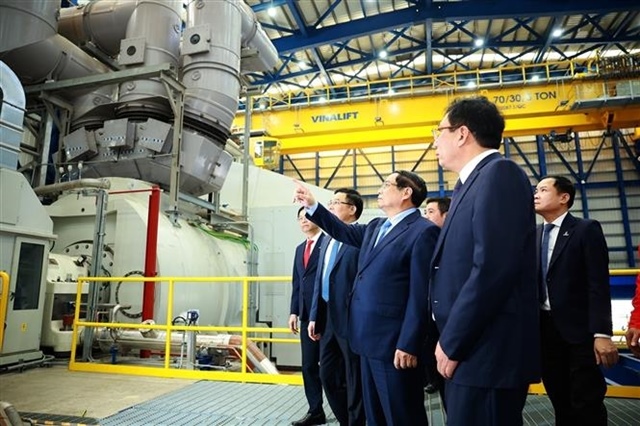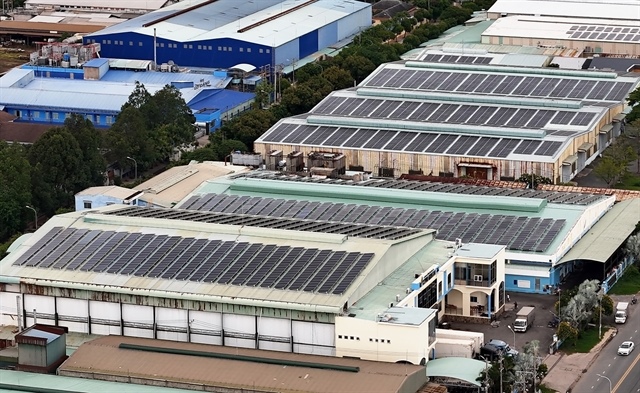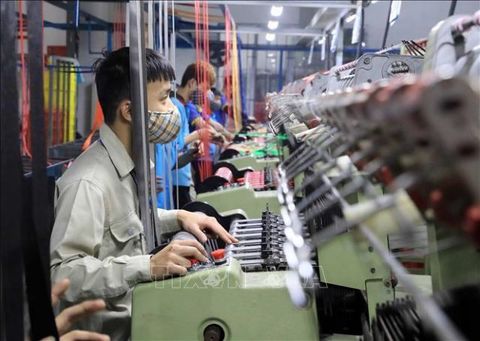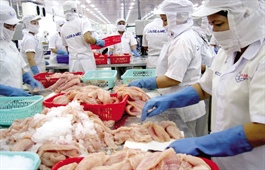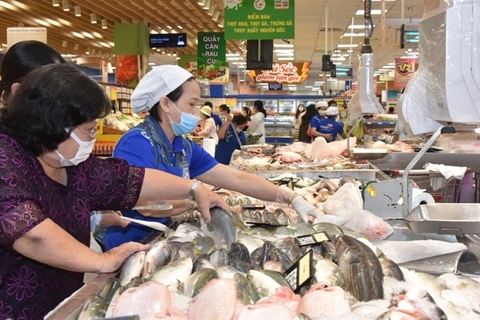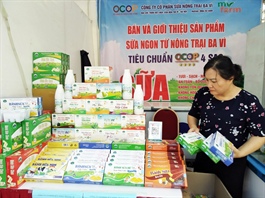Experts call for review of EVFTA to build on positive results
Experts call for review of EVFTA to build on positive results
The European Union-Vietnam Free Trade Agreement (EVFTA) has gained positive results since coming into effect on August 1, 2020, though, experts believe it is necessary to review the achieved results to identify and rectify problems and challenges encountered in the past two years.

The comments were made during a seminar held by the Ministry of Industry and Trade (MoIT) to review the EVFTA on Tuesday in Ha Noi.
Opening the remarks at the seminar, Deputy Minister of MoIT Tran Quoc Khanh told participants that since the EVFTA came into effect on August 1, 2020, Viet Nam's two-way trade turnover had achieved impressive growth, despite the severe impact of the COVID-19 pandemic, logistics and supply chain crisis, and geopolitical fluctuations.
Deputy Minister Khanh further said during the first year, bilateral trade turnover reached US$54.9 billion, making a year-on-year increase of 12.1 per cent. Of this, export turnover reached $34.5 billion or 11.3 per cent. In the second year, the bilateral trade turnover climbed to $1.4 billion, with an increase of 11.9 per with $45 billion from export. Many Vietnamese essential products recorded positive growth, such as textiles with a 24 per cent increase, footwear (19 per cent) and seafood (41 per cent).
In 2021, the export turnover of Vietnamese goods to the EU market using C/O form EUR.1 reached $8.1 billion, making an account for 20.2 per cent of total export turnover to the EU or 24.4 per cent rose against the same period in 2020.
In the first ten months this year, the ratio of taking advantage of incentives from the EVFTA agreement stood at 25.1 per cent, with an increase of more than 30 per cent over the same frame last year.
The Vietnam Chamber of Commerce and Industry reports that four out of 10 Vietnamese businesses benefited from the EVFTA. Deputy Minister Khanh noted that the results had shown tireless efforts of government bodies from the grassroots to the central level over the past two years.
Challenges ahead
According to the Ministry of Industry and Trade, the achievements are only the initial steps. The potential and opportunities from the EU market remain large. However, many difficulties and obstacles are facing Vietnamese businesses.
Khanh emphasised that the Vietnamese brand had not been well developed and known in European countries while the value and benefits gained by Vietnamese businesses failed to meet their potential.
Sharing views with the deputy minister, Ngo Chung Khanh, a senior expert from the MoIT, said computers, garment-textile, machines and equipment, footwear, fresh vegetables, processed vegetables and fruit, seafood and rice were key products for export.
Chung Khanh said if there were no EVFTA, the tax rate applied to vegetables would reach the highest ratio of 20 per cent, noting that most import taxes had declined to zero per cent due to the EVFTA.
However, the volume of fruit and vegetable for export to the EU market accounted for 2.7 per cent only. Under the trade agreement, the EU has eliminated tariffs on 86.5 per cent of Vietnamese seafood, with a zero-tax rate expected after seven years. Therefore, the EVFTA is expected to create an excellent opportunity to export Vietnamese seafood, according to the expert. However, Viet Nam's seafood exports to the EU market account for only about 4.2 per cent of the market share.
Nguyen Van Hieu, sales director of Viet Nam's Loc Troi Group, said there was a lot of room for domestic businesses to export rice to the EU market. Over the years, his group had taken advantage of this market well.
In 2018, the Loc Troi group exported more than 2,000 tonnes of rice to this market, and in 2019, it sold 8,000 tonnes of rice to this market, followed by 11,000 tonnes in 2020, 12,000 tonnes in 2021 and 24,000 tonnes this year. However, Hieu noted to keep exports sustainable, Vietnamese businesses needed to pay great attention to their quality for export due to strict control of pesticide residues in food.
Ngo Chung Khanh concluded that the Ministry of Industry and Trade would work well with ministries and bodies to focus on implementing solutions to help local businesses have excellent access to the websites of ministries and agencies.
In addition, the ministry would also conduct its review of cities and provinces via the free trade agreement index (FTA Index) to be announced by 2023, which is expected to create an impetus for localities to create a favourable environment for enterprises and enable them to take advantage of free trade deals.
The ministry would also renovate communication forms via social networks by conducting short videos, training courses and seminars.
Last but not least, the ministry would work out specific solutions by offering business credit loans, promoting connectivity between companies, and creating incentives for businesses.





